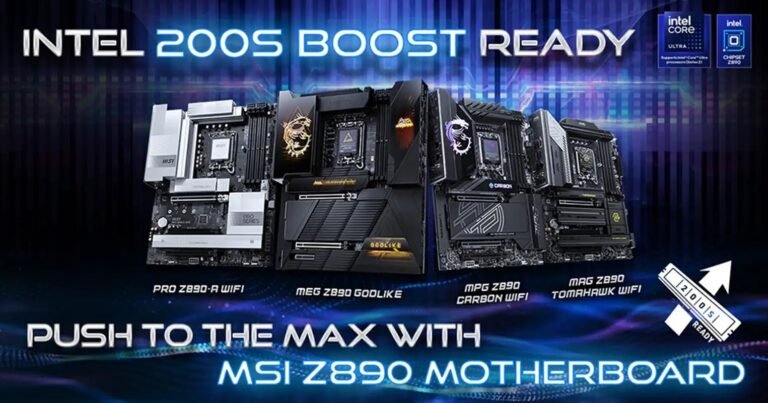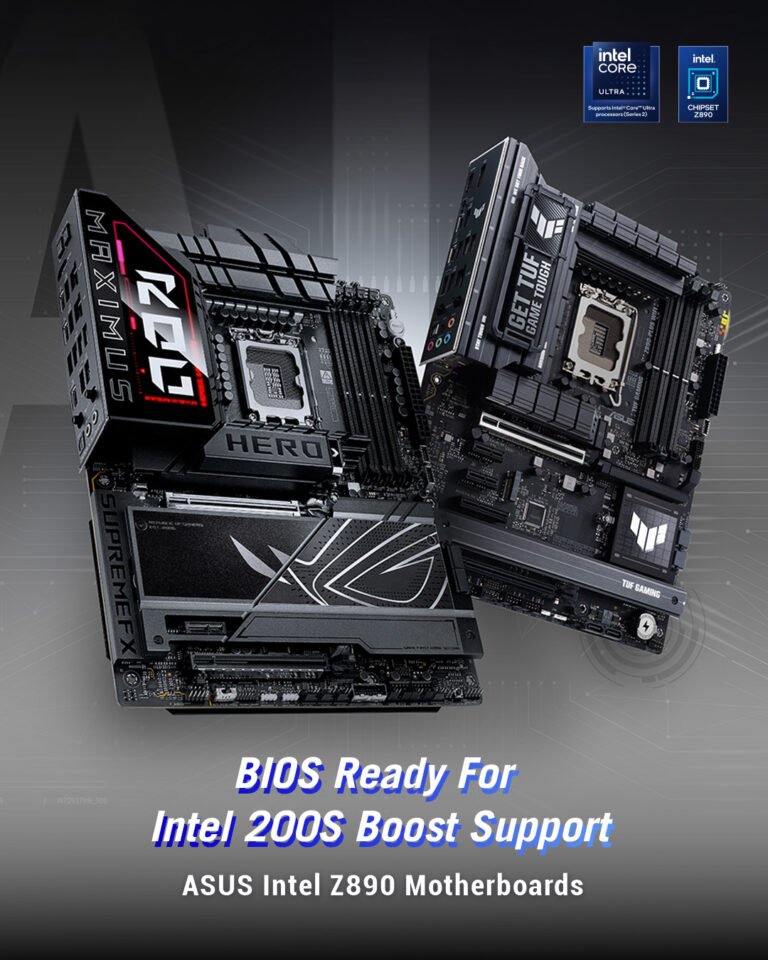Intel has introduced the “200S Boost” overclocking feature for its Core Ultra 200S (Arrow Lake) K-series processors, including the Core Ultra 9 285K, Core Ultra 7 265K/KF, and Core Ultra 5 245K/KF. This feature, available via a BIOS update on Intel Z890 motherboards, enhances gaming performance by increasing fabric speeds (from 2.6 GHz to 3.2 GHz for NGU/SA and 2.1 GHz to 3.2 GHz for die-to-die communication) and enabling memory overclocking up to 8000 MT/s with a 1DPC (one DIMM per channel) configuration.
| # | Default Clock Speed | 200S Boost profile |
|---|---|---|
| Fabric speed | 2.6 GHz | Up to 3.2 GHz VccSA ≤ 1.20V |
| Die-to-Die speed | 2.1 GHz | Up to 3.2 GHz VccSA ≤ 1.20V |
| RAM speed | 6400 MT/s | Up to 8000 MT/s VDD2 ≤ 1.4V and VccSA ≤ 1.20V Module VDDQ and VDD ≤ 1.4V |
Notably, Intel guarantees that using 200S Boost won’t void the processor’s 3 Year Warranty, unlike traditional manual overclocking. Testing shows an average 7% gaming performance uplift, primarily from memory overclocking, with some configurations achieving up to 7.5% improvement. However, performance varies depending on motherboard design, BIOS optimizations, and memory kits. While this feature is a welcome addition, it doesn’t fully close the gap with AMD’s Ryzen 9000 series, particularly the X3D models, which remain superior for gaming.
Users need to update their motherboard BIOS, enable the 200S Boost profile, and use XMP-compatible memory to activate it. Check with your motherboard manufacturer for compatibility.
How to Turn On Intel 200S Boost
Update Your BIOS
Go to your motherboard maker’s website and download the latest BIOS update for your model. Install it.Enter BIOS Settings
Restart your computer and press the BIOS key (usually Delete or F2) while it starts up.Find Intel 200S Boost Option
Go to the Overclocking section. Look for a setting called Intel 200S Boost—it might be near the XMP profile options. Turn it on.Restart Your PC
Save the settings and restart your computer.Check That Everything’s Working Fine
Use a test like Cinebench to check if your PC is stable. You can use Intel XTU to monitor temperatures and voltages.
Gigabyte, ASUS, MSI and ASRock also confirm support:


Source Via : HotHardware

